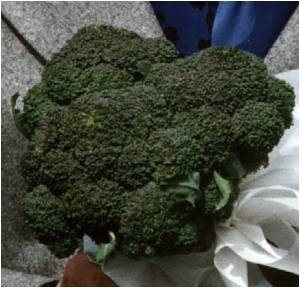A compound found in soybeans may become an effective HIV treatment
without the drug resistance issues faced by current therapies, according
to new research by George Mason University researchers.
It’s in the early stages, but genistein, derived from soybeans and other plants, shows promise in inhibiting the HIV infection, says Yuntao Wu, a professor with the George Mason-based National Center for Biodefense and Infectious Diseases and the Department of Molecular and Microbiology.
 Still, that doesn’t mean people should begin eating large amounts of
soy products. “Although genistein is rich in several plants such as
soybeans, it is still uncertain whether the amount of genistein we
consume from eating soy is sufficient to inhibit HIV,” Wu says.
Still, that doesn’t mean people should begin eating large amounts of
soy products. “Although genistein is rich in several plants such as
soybeans, it is still uncertain whether the amount of genistein we
consume from eating soy is sufficient to inhibit HIV,” Wu says.
Genistein is a “tyrosine kinase inhibitor” that works by blocking the communication from a cell’s surface sensors to its interior. Found on a cell’s surface, these sensors tell the cell about its environment and also communicate with other cells. HIV uses some of these surface sensors to trick the cell to send signals inside. These signals change cell structure so that the virus can get inside and spread infection.
But genistein blocks the signal and stops HIV from finding a way inside the cell. It takes a different approach than the standard antiretroviral drug used to inhibit HIV.
“Instead of directly acting on the virus, genistein interferes with the cellular processes that are necessary for the virus to infect cells,” Wu says. “Thus, it makes the virus more difficult to become resistant to the drug. Our study is currently it its early stage. If clinically proven effective, genistein may be used as a complement treatment for HIV infection.”
Wu sees possibilities in this plant-based approach, which may address drug toxicity issues as well. Because genistein is plant-derived, it may be able to sidestep drug toxicity, a common byproduct of the daily and lifelong pharmaceutical regimen faced by patients with HIV to keep the disease at bay, Wu says. Typically, patients take a combination of multiple drugs to inhibit the virus. The frequency can lead to drug toxicity. Plus, HIV mutates and becomes drug-resistant.
Wu and his team are working at finding out how much genistein is needed to inhibit HIV. It’s possible that plants may not have high enough levels, so drugs would need to be developed, Wu says.
Wu’s research is feeling the financial squeeze these days due to sequestration and budget cuts within the National Institutes of Health, he says. His lab has turned to novel ways to fund the HIV research, including the genistein project. A bicycle ride dubbed NYC DC AIDS Research Ride raised money for Wu’s lab a few years ago and has stepped up its efforts with a new fundraiser.
Other George Mason researchers on the genistein project include Jia Guo, Taban Rasheed, Alyson Yoder, Dongyang Yu, Huizhi Liang, Fei Yi and Todd Hawley.Xuehua Xu and Tian Jin from the National Institute of Allergy and Infectious Diseases in Rockville, Md., and Binhua Ling from Tulane University Health Sciences Center are also working on the research.
Source:George Mason University
It’s in the early stages, but genistein, derived from soybeans and other plants, shows promise in inhibiting the HIV infection, says Yuntao Wu, a professor with the George Mason-based National Center for Biodefense and Infectious Diseases and the Department of Molecular and Microbiology.
 Still, that doesn’t mean people should begin eating large amounts of
soy products. “Although genistein is rich in several plants such as
soybeans, it is still uncertain whether the amount of genistein we
consume from eating soy is sufficient to inhibit HIV,” Wu says.
Still, that doesn’t mean people should begin eating large amounts of
soy products. “Although genistein is rich in several plants such as
soybeans, it is still uncertain whether the amount of genistein we
consume from eating soy is sufficient to inhibit HIV,” Wu says.Genistein is a “tyrosine kinase inhibitor” that works by blocking the communication from a cell’s surface sensors to its interior. Found on a cell’s surface, these sensors tell the cell about its environment and also communicate with other cells. HIV uses some of these surface sensors to trick the cell to send signals inside. These signals change cell structure so that the virus can get inside and spread infection.
But genistein blocks the signal and stops HIV from finding a way inside the cell. It takes a different approach than the standard antiretroviral drug used to inhibit HIV.
“Instead of directly acting on the virus, genistein interferes with the cellular processes that are necessary for the virus to infect cells,” Wu says. “Thus, it makes the virus more difficult to become resistant to the drug. Our study is currently it its early stage. If clinically proven effective, genistein may be used as a complement treatment for HIV infection.”
Wu sees possibilities in this plant-based approach, which may address drug toxicity issues as well. Because genistein is plant-derived, it may be able to sidestep drug toxicity, a common byproduct of the daily and lifelong pharmaceutical regimen faced by patients with HIV to keep the disease at bay, Wu says. Typically, patients take a combination of multiple drugs to inhibit the virus. The frequency can lead to drug toxicity. Plus, HIV mutates and becomes drug-resistant.
Wu and his team are working at finding out how much genistein is needed to inhibit HIV. It’s possible that plants may not have high enough levels, so drugs would need to be developed, Wu says.
Wu’s research is feeling the financial squeeze these days due to sequestration and budget cuts within the National Institutes of Health, he says. His lab has turned to novel ways to fund the HIV research, including the genistein project. A bicycle ride dubbed NYC DC AIDS Research Ride raised money for Wu’s lab a few years ago and has stepped up its efforts with a new fundraiser.
Other George Mason researchers on the genistein project include Jia Guo, Taban Rasheed, Alyson Yoder, Dongyang Yu, Huizhi Liang, Fei Yi and Todd Hawley.Xuehua Xu and Tian Jin from the National Institute of Allergy and Infectious Diseases in Rockville, Md., and Binhua Ling from Tulane University Health Sciences Center are also working on the research.
Source:George Mason University



















